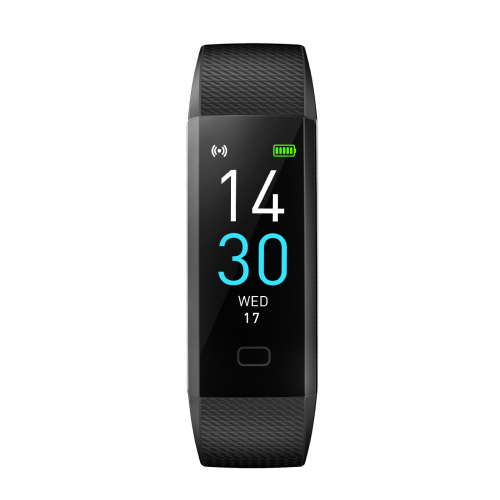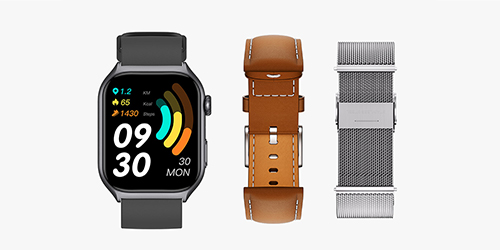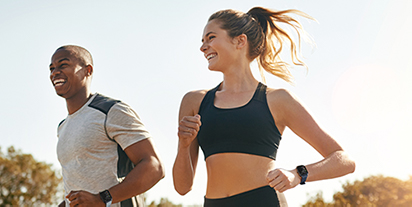Pilates is a great way to stay fit and healthy. It is suitable for all fitness levels, whether you’re a beginner or an advanced practitioner, you can adapt your moves to your body. Finding time or place for a full-body workout can be challenging, but with Pilates, you can get a comprehensive workout in just 30 minutes. Pilates is a daily routine you can do at home to strengthen your core, improve flexibility, and increase overall body strength.
What is Pilates?
Pilates is a low-impact exercise that focuses on core strength, flexibility, and overall body conditioning. It was developed by Joseph Pilates in the early 20th century and emphasizes controlled movements, often involving mat exercises (Mat Pilates) or specialized equipment like reformers.
Core Principles
- Breathing: Proper breathing techniques are essential in Pilates to enhance movement efficiency and oxygenate the muscles.
- Concentration: Focus on each movement to ensure precision and effectiveness.
- Control: Every movement is performed with control to prevent injury and maximize benefits.
- Centering: Exercises are centered around the core, which includes the abdomen, lower back, hips, and buttocks.
- Precision: Each movement is executed with precision to target specific muscle groups.
- Flow: Movements are performed in a smooth, flowing manner to maintain continuous motion.
Key Benefits
- Improves Core Strength: Pilates targets the deep abdominal muscles, helping to build a strong core.
- Enhances Flexibility: Regular practice increases flexibility and range of motion.
- Better Posture: Promotes better posture by strengthening the muscles that support your spine, reducing the risk of back pain and improving overall posture.
- Prevents Injuries: Encourages balanced muscle development and proper movement patterns.
- Boosts Energy: Enhances energy levels through controlled breathing and mindful movements.
- Reduces Stress: Promotes relaxation and reduces stress through the mind-body connection.
6 Easy Pilates Workout Moves for Beginners
1. Plank
The Plank is a fundamental Pilates exercise that focuses on building core strength and stability. It’s a full-body workout that engages multiple muscle groups. It helps strengthen your core, shoulders, arms, and legs. Improves overall stability and endurance.
How to Do It:
- Start in a push-up position with your hands directly under your shoulders.
- Keep your body in a straight line from head to heels, and avoid dropping your hips or lifting them too high.
- Hold this position, Tighten your abdominal muscles to support your lower back.
- Try to hold this position for 30 seconds to 1 minute.
Note: If you feel strain in your lower back or shoulders, modify the plank by lowering your knees to the ground.
2. The Roll-Up
This exercise involves rolling up from lying down to sitting up, then back down again. It improves spinal flexibility, stretches your back and hamstrings, and strengthens your core muscles through controlled movements. Proper breathing is important for this exercise.
How to Do It:
- Lie on your back.
- Inhale and lift your arms towards the ceiling.
- Lift your head and exhale as you slowly roll up to a seated position, avoiding using momentum.
- When your hands are parallel to your feet, inhale and start rolling back down.
- Exhale as you lower your spine, vertebra by vertebra, until you are lying down with your arms overhead.
Note:
- Maintain a neutral spine and avoid jerky movements.
- If your hamstrings are tight or you have lower back issues, try bending your knees slightly or placing a towel under your lower back for extra support.
3. The Hundred
This classic exercise warms up your body, improves blood circulation, and strengthens your abdominal muscles. It involves lying on your back, lifting your legs and head, and pumping your arms. This move engages your core muscles, helping to build strength and improve stamina by holding the position and moving your arms for a longer time.
How to Do It:
- Lie on your back with your knees bent and feet flat on the floor.
- Lift your legs with your knees bent at 90 degrees (like a tabletop), or extend them straight up at a 45-degree angle for more challenge.
- Lift your head, neck, and shoulders off the mat, reaching your arms straight out by your sides.
- Pump your arms up and down quickly, keeping them straight. Inhale for 5 counts and exhale for 5 counts. * Beginners can start with 5 cycles of this breathing pattern, making a total of 100 arm pumps.
Note:
- If your neck feels strained, lower your head to the mat and continue with your head supported.
- Keep your legs at a 45-degree angle or higher if your lower back feels strained.
- Focus on controlled breathing to avoid holding your breath.
4. Single-Leg Stretch
The Single-Leg Stretch is part of the Pilates “Stomach Series” and is excellent for beginners. It involves alternating leg movements while maintaining core stability, which helps improve coordination and balance.
It targets the deep abdominal muscles, helping to strengthen your core and improve stability while increasing flexibility and mobility in the hips, hamstrings, and lower back.
How to Do It:
- Lie on your back with your knees bent, and shins parallel to the floor.
- Lift your head, neck, and shoulders off the mat.
- Place your hand on the side of the bent knee, holding your shin; and the other arm bent with the hand on the knee.
- Extend the other leg out at a 45-degree angle, pulling your bent knee towards your chest.
- Inhale to switch legs, and continue alternating legs in a controlled manner. * Keep your core engaged and your lower back pressed into the mat.
Note:
- Ensure your lower back stays pressed into the mat to avoid arching.
- Don’t pull on your neck with your hands. Instead, support your head lightly with your fingertips.
- Move your legs in a controlled manner to maintain stability, avoiding using momentum.
- If you experience neck strain, you can keep your head on the mat and focus on the leg movements.
5. Double-Leg Stretch
The Double-Leg Stretch is a core-strengthening exercise that also improves coordination. It’s a common exercise in many beginner Pilates routines, helping to build core strength and stability, improve coordination, and enhance flexibility.
How to Do It:
- Lie on your back with your knees bent and shins parallel to the floor.
- Lift your head, neck, and shoulders off the mat.
- Extend your arms and legs simultaneously.
- Circle your arms around and pull your knees back to your chest.
Note:
- Ensure your lower back stays pressed into the mat to avoid arching.
- Don’t pull on your neck with your hands. Instead, support your head lightly with your fingertips.
- Move your arms and legs in a controlled manner to maintain stability.
6. Swan
The Swan is a foundational Pilates exercise that resembles the yoga “Cobra” pose. It involves lifting the upper body off the mat while lying face down, which helps to strengthen the back muscles and increase flexibility in the spine and shoulders.
This exercise strengthens your back muscles and increases spinal flexibility and core strength. It also improves posture by stretching the chest and shoulders, helping to counteract the effects of sitting and hunching.
How to Do It:
- Lie face down on your mat with your legs extended and feet hip-width apart. Place your hands under your shoulders with elbows bent.
- Tighten your core muscles to support your lower back.
- Inhale as you press your hands into the mat, and lift your head, chest, and upper ribs off the mat. * Keep your neck long and shoulders relaxed.
- Hold this position for a few seconds, keeping a gentle curve in your spine.
- Exhale and slowly lower your upper body back to the mat.
- Repeat 5-10 times, focusing on smooth and controlled movements.
Note:
- Don’t stretch your lower back too much. Keep the movement comfortable to avoid strain.
- Keep your neck in line with your spine to avoid neck strain.
- Always tighten your core muscles to support your lower back.
- If you have lower back issues, lift only your head and chest, and keep your hands on the mat for support.
Conclusion
Pilates is a versatile and effective workout so that you can easily do at home. By adding these exercises to your daily routine, you’ll build strength, improve flexibility, and enhance your overall well-being. Take it step by step, and remember to listen to your body to avoid overuse injuries. So, roll out your mat to start your Pilates journey today, and stick to it!
























